Best Hikes in Mammoth Lakes
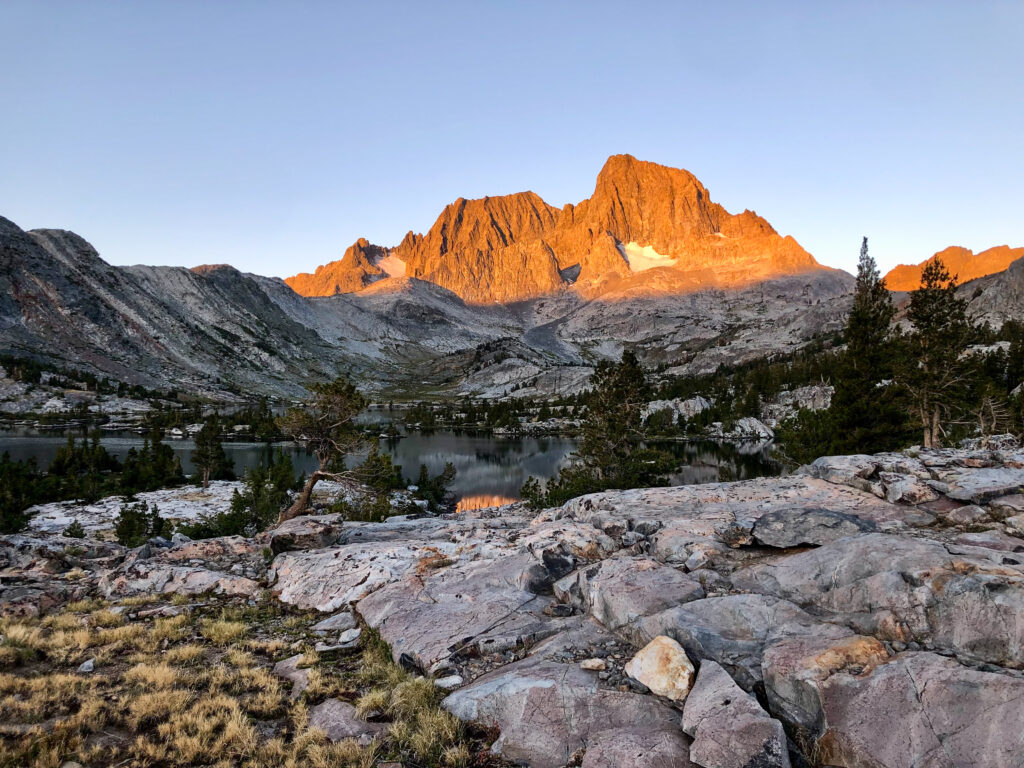
Mammoth Lakes is home to dense pine forests, large granite cliffs, pristine alpine lakes, and unique volcanic geology. With such diverse landscapes, there is plenty to explore. The best hikes in Mammoth Lakes range from short day hikes to crystal clear lakes to multi-day trips spent in the backcountry.
As a backpacking guide based out of Mammoth Lakes and an avid explorer on my days off, these are some of the best hikes in Mammoth Lakes that I’ve come across!
Where is Mammoth Lakes?
Mammoth Lakes is located on the east side of the Sierra Nevada mountains in California. It’s about a 6-hour drive from Los Angeles and a 5-hour drive from San Francisco via Tioga Pass through Yosemite National Park.
The town of Mammoth Lakes sits just outside of Yosemite National Park and isn’t far from the border of Nevada.
Mammoth Lakes Geology
Mammoth Lakes is known as a unique geological area. From glacially carved basins to one of the most active volcanic zones in the 48 states the hiking is quite unique around here.
Surprising to many, Mammoth Mountain, the ski resort is actually a volcano! Also surrounding the area are cinder cones, hot springs, craters, and more. In addition to the smooth glacial granite peaks and cliffs, there is a variety of volcanic rocks including basalt, tuff, obsidian, and rhyolite.
Some of the best hikes in Mammoth Lakes showcase a variety of these geological rocks and landscapes. While you might stand on the top of a granite peak, you’ll catch views of a volcanic cone in the distance!
When to Go Hiking in Mammoth Lakes
Summer through fall is the best time to hike in Mammoth Lakes. The months of June to October bring the most reliably warm weather and less snow.
One of the biggest factors to consider before heading out in the early summer is the snowpack. This varies every year based on the amount of snow in the winter.
During very dry years at lower elevations hikes are clear at the end of May. In high snow years, the snow sticks around a lot longer. Higher elevations will likely require snow travel. It’s important to use microspikes and know how to use an ice axe to self-arrest if traveling in snowy areas.
**For this 2023 season the snow is going to stick around for a while. This past winter Mammoth Lakes broke its record for the most snow ever. It’s likely we will see snow at high passes and peaks through August and a decent amount of snow throughout the region at the beginning of summer.
Luckily, there are many hiking trails in Mammoth Lakes so you have plenty of options to choose from.
Short Hikes in Mammoth Lakes
These are some of my favorite short Mammoth Lakes hiking trails. These range from short and easy hikes with minimal elevation gain to short hikes with moderate elevation gain.
Either way, you can spend just a couple of hours exploring these areas. They’re all great spots to hang out by the scenic lakes and viewpoints and some can’t-miss spots when in the area.
Lakes Basin Path
1 mile to 5 miles of paved trail, flat
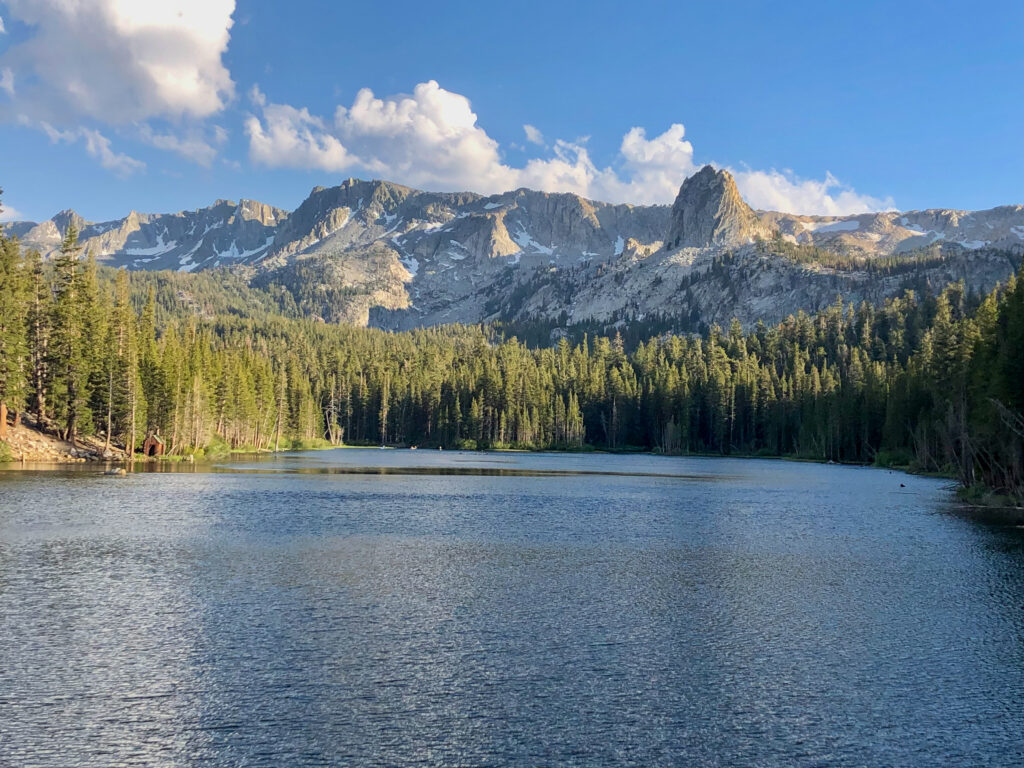
The Mammoth Lakes Basin Path is a paved pass that connects and follows along the largest road-accessible lakes in the lakes basin. You can park at many spots along the way and hike for a half hour or spend a half day walking the trail.
My favorite place to start is at Twin Lakes then taking the trial up past Lake Mary, Lake George, Lake Mamie, and finishing at Horseshoe Lake. The views along the way are stunning and picturesque and the crystal clear water is unbelievable. The path is also used by cyclists.
Convict Lake Loop Trail
2.5-mile loop, 180-foot gain

Convict Lake is one of the best hikes in Mammoth Lakes to enjoy the stunning alpine landscapes in the region. The east side of Convict Lake is surrounded by drier vegetation and sagebrush. As you hike around the lake you’ll see Juniper trees followed by Aspen trees canopying the trail.
Convict Lake is a stunning lake and an easy hike in Mammoth Lakes. The trial is relatively flat. You’ll see views of Mount Morrison towering above you and if you visit the lake in the late morning to mid-afternoon you’ll notice the lake is bright turquoise colored!
I love visiting Convict Lake for an afternoon trail run, a walk around with family, and as a picnic spot. It’s also a popular destination for fishing, paddleboarding, and renting pontoon boats!
Inyo Craters Trail
1.6-mile loop, 310-foot gain

The Inyo Craters Trail shows off some of the most unique volcanic geology of all of the easy hikes in Mammoth Lakes. It’s a short loop trail that starts in the forest and then circles around two deep craters now filled with pools of green water.
In addition to the Inyo Crater pools are surrounding views of Mammoth Mountain, the San Joaquin Ridge, and views as far out as the White Mountains.
The road to get to Inyo Craters requires a few miles of driving on a dirt road. An all-wheel-drive or four-wheel-drive vehicle is recommended however, if you drive carefully, you’ll make it in a two-wheel-drive vehicle.
Minaret Vista Trail
2.6 miles out & back; 250 foot gain
The Minaret Vista Trail is a short trail that starts at Mammoth Mountain Inn and ends at Minaret Vista Viewpoint. The trail wanders through the dense forest before opening up to a clearing with stunning views of the Minarets.
It is also possible to drive to Minaret Vista but the walk through the forest is a nice place to stretch your legs and if the road is closed in the winter, it’s possible to snowshoe out to Minaret Vista from Mammoth Mountain Inn.
Half-Day Hikes in Mammoth Lakes
Some of the best hikes in Mammoth Lakes are half-day hikes! These trails usually take between 2.5 – 5 hours to complete depending on your speed. Once again, they’re all nice spots where you can enjoy a picnic lunch.
Crystal Lake Trail
3.2 miles out & back, 840 feet gain
Crystal Lake Trail is one of my favorite hikes in Mammoth Lakes. It’s located in the Lakes Basin, a short drive from town, and is the perfect spot to go on a trail run or a lovely spot to hike in and enjoy a picnic.
The trail isn’t too long and there are switchbacks up most of the trail but some sections feel tougher being at altitude. As you climb up to Crystal Lake you’ll have stunning views of the Mammoth Lakes Basin down below. After climbing, the trail flattens then dips down, and offers great views of Crystal Lake and Crystal Crag, a famous climbing spot.
The Crystal Lake Trailhead starts at Lake George. Parking fills up early during the summer, especially on weekends so arrive early if possible.
Devils Postpile Loop
1.3-mile loop; 230-foot gain
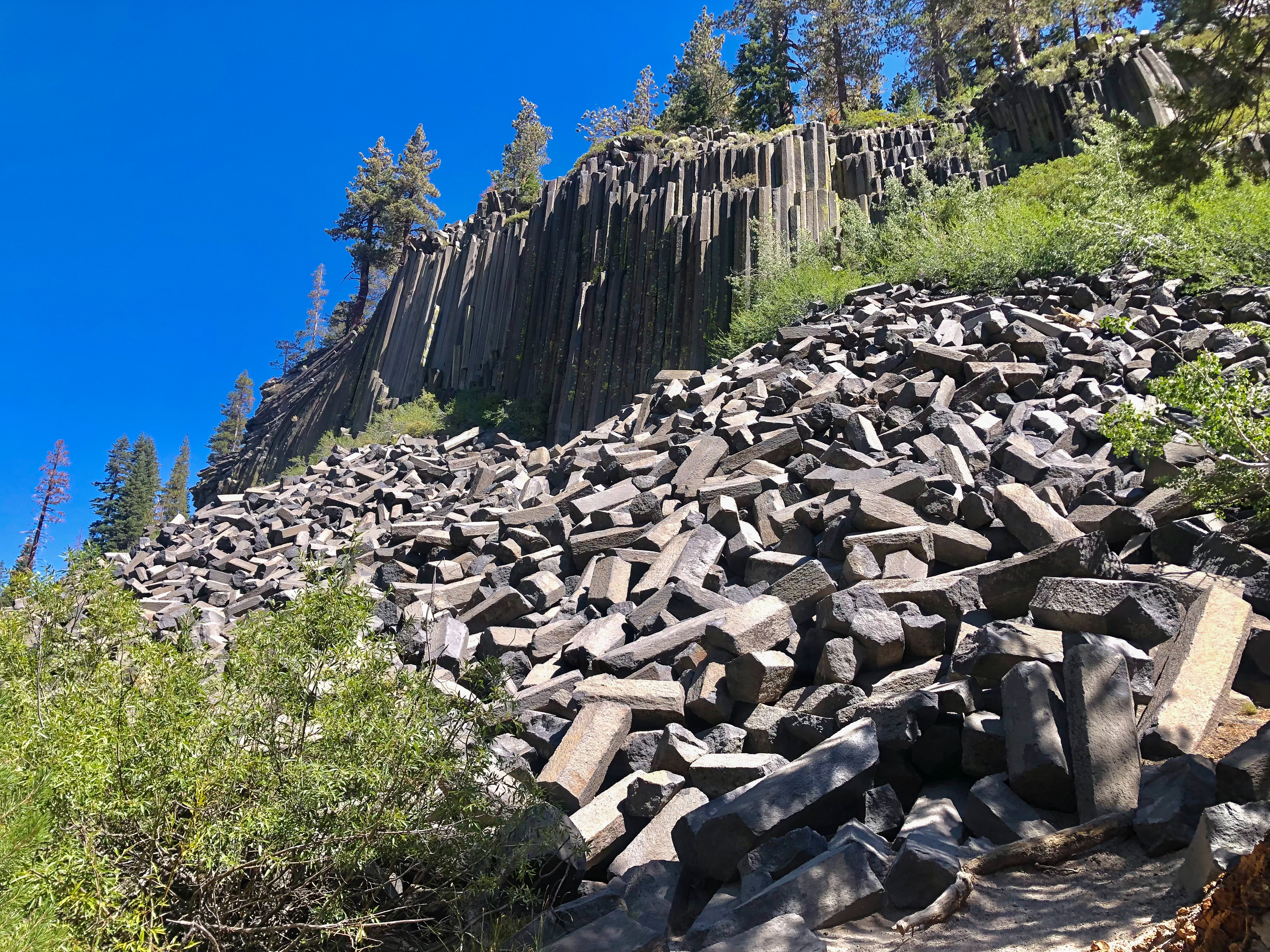
The Devils Postpile Loop is located in Devils Postpile National Monument just west of the town of Mammoth Lakes. It features some unique volcanic formations including basalt columns.
You’re able to walk above and below the columns. There are only a few places in the world where basalt columns exist.
The Devils Postpile Loop is a short hike. Most of the trail is flat with a couple of ups. While the hike doesn’t take too long, the trailhead is a bit challenging to get to. You must take a bus from Mammoth Mountain Inn down to the stop for Devils Postpile. Because of this visit to Devils Pospile can turn the hike into a half or full-day adventure.
Rainbow Falls via Devils Postpile Trail
5 miles out & back; 515 foot gain
Extend your hike to Devils Postpile by continuing on to Rainbow Falls. Rainbow Falls are the tallest waterfalls along the Middle Fork of the San Joaquin River. They drop 101 feet and get their name from the rainbows that commonly reflect off the mist of the falls. You can see the rainbow best during the middle of the day when the sun is the highest in the sky.
This trail is a bit longer than just hiking out to Devils Postpile. While the elevation gain is fairly easy to moderate, a lot of the trail is exposed so pack a sun hat, sunblock, and plenty of water.
Sherwin Lakes Trail
4.5 miles out & back; 900 foot gain
The Sherwin Lakes Trail is one of the best hikes in Mammoth Lakes. It’s a great half-day hike option spending 2 – 3 hours hiking and some time relaxing at the lakes.
Starting in the brush and climbing into the alpine you’ll eventually reach a few alpine lakes all next to each other. It’s a moderate climb up to the lakes. Steep in a few areas, and you’ll feel it if you’re not used to the altitude. The Sherwin Lakes are the perfect place to relax and enjoy a picnic and a swim.
Duck Pass Trail
7.6 miles out & back; 2160 foot gain

Duck Pass Trail starts at the Mammoth Lakes Basin and climbs past multiple pristine alpine lakes as you hike through John Muir Wilderness and make your way up to Duck Pass, at 10,800 feet in elevation.
Along the way, you’ll pass Arrowhead Lake, Skeleton Lake, and Barney Lake, all of which are good spots to stop and rest or go for a dip! If you’re looking to make your hike shorter, they are all great spots to rest too.
Full-Day Hikes in Mammoth Lakes
These are some of the best hikes in Mammoth Lakes if you’re looking to spend a full day out hiking. The longer the hike, the more variety you’ll see on the trail. These are some of my favorite long Mammoth Lake trails to explore.
Duck Pass and Pika Lake Trail
10.1 miles out & back; 2500 foot gain
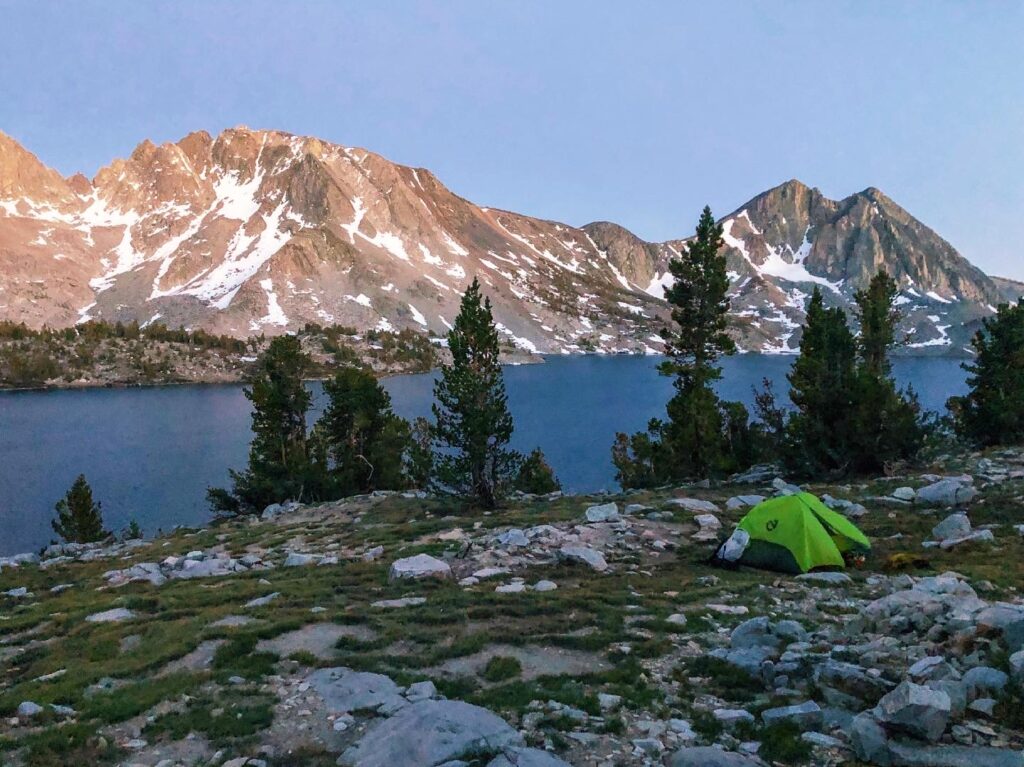
If you’re looking for a long day then add on Duck Lake and Pika Lake after hiking up to Duck Pass. When you reach Duck Pass you’ll see a very large lake, Duck Lake, and just beyond that is Pika Lake. If you have a full day of hiking it’s worth exploring that area. If you just stop at Duck Lake Pass your hike will be more like a half-day hike.
Either way, this is one of my favorite Mammoth Lakes hiking areas as these trails interconnect with many other trails offering an opportunity for plenty of adventures!
Valentine Lake via Sherwin Lakes Trail
11 miles out & back; 1900 foot gain
If you’re looking to push for a long day past Sherwin Lakes then continuing up to Valentine Lake is a great option for a rewarding but long full day of hiking.
Valentine Lake via Sherwin Lakes Trail climbs high, to about 9,700 feet in elevation. Take it slow and steady as you ascend the elevation gain. You’ll have impressive views looking out down of Mammoth Lakes, the surrounding alpine granite, and the Owens Valley.
Mammoth Crest Loop
13-mile loop; 3,000-foot gain
The Mammoth Crest Loop is one of the best hikes in Mammoth Lakes. It circles around and shows off many of the highlights around the town of Mammoth. It starts in the Mammoth Lakes Basin passing many of the high alpine lakes, crossing over Duck Pass and alongside Duck Lake then continues around passing Deer Lakes, before starting to descend back into the Lakes Basin.
From the Mammoth Crest Loop, you’ll enjoy views of countless lakes and panoramic vistas of all the major geological formations and mountain peaks surrounding the Mammoth Lakes area. Most of the trail is well established but a few parts are on loser scree.
Lake Dorothy
12 miles out & back, 3400-foot gain
Lake Dorothy is one of the high alpine lakes deeper into John Muir Wilderness. Start at the Convict Lake Trailhead and continue around Convict Lake. Eventually, you’ll cross into John Muir Wilderness and follow along the Convict Creek Trial. You’ll take this all the way up to Lake Dorothy, the largest in the area while also passing Mildred Lake.
If you want to continue a mile further you’ll reach Bighorn Lake. Many other trails also interconnect back in this area making it a great option for a backpacking trip too.
Multi-Day Hikes in Mammoth Lakes
Mammoth Lakes is also a great starting point for many backpacking trips. It’s also a common resupply spot if you’re on a long thru-hike! These are a few options for some of the best backpacking trails near Mammoth Lakes. Whether you’re planning your first backpacking trip or a seasoned thru-hiker, here are some of the best backpacking trails in Mammoth Lakes.
Shadow, Garnet, and Thousand Island Lake Loop via Agnew Meadows
18-mile loop, 3200-foot gain
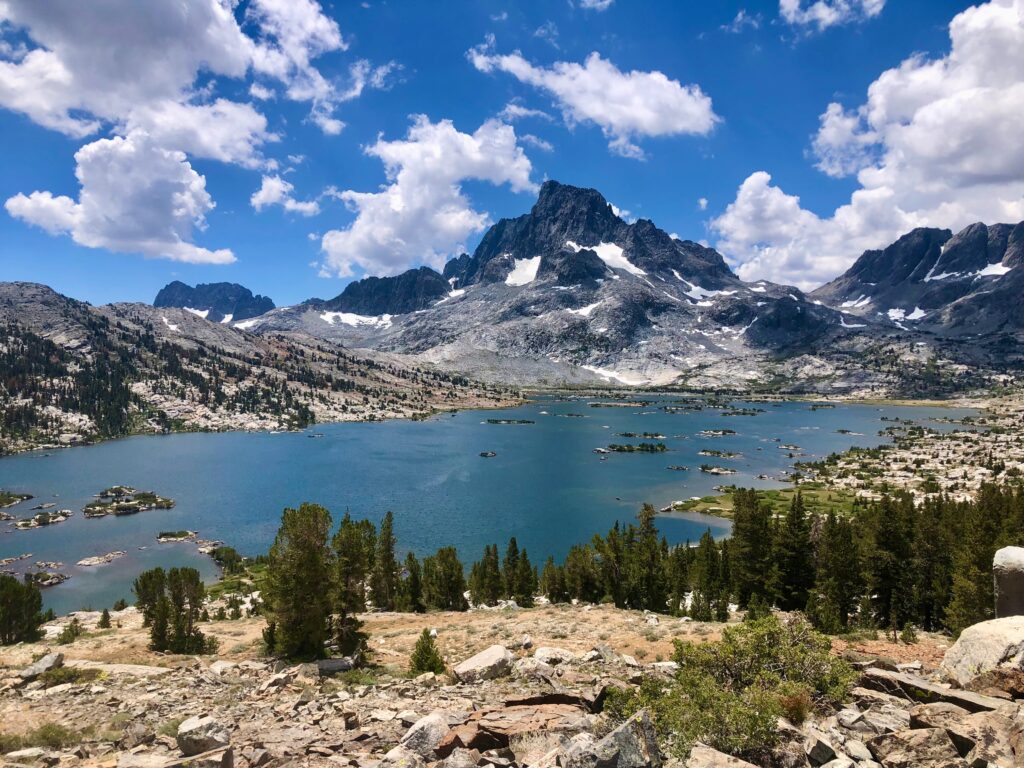
Backpack some of the most iconic and picturesque lakes in the area. This is one of the best 2 or 3-day backpacking trips in Mammoth Lakes (or if you’re really fast, you can complete it in one).
Located in Ansel Adams Wilderness the trail starts at Agnew Meadows. This is located off of the shuttle that takes you down to Devils Postpile National Monument. The route follows along the Shadow Creek Trail until you pass Shadow Creek Lake and join the John Muir Trail. The JMT passes by Garnet Lake and Thousand Island Lake. Both lakes offer spectacular views of Mount Ritter and Banner dominating the landscape.
After Thousand Island Lake head southeast on the River Trail back to Shadow Creek Trail back to Agnew Meadows. There are plenty of ways to alter this trip with different starting and ending points but this is one of the more common route options.
You must acquire permits through Inyo National Forest before this trip.
John Muir Trail
220 mile thru-hike; 47,000 foot gain; 2 – 3 weeks

The John Muir Trail is one of the most popular thru-hikes in the Sierra Nevada and surely shows off the best it has to offer. The trail runs about 220 miles from Yosemite Valley in the north down to Mount Whitney, the highest point in the contiguous US.
Mammoth Lakes is actually one of the common resupply towns along the JMT. Passing right through Devils Postpile National Monument, there’s a bus that hikers take to get from the trail to the town to resupply.
The John Muir Trail requires proper preparation, training, and experience, but it’s easily one of the best long-distance hikes you can complete in the United States. If a few weeks on the trail isn’t your thing it’s also great to hike a section of the JMT.
Pacific Crest Trail
2,650 miles
The famous Pacific Crest Trail, or the PCT. One of the longest and most famous trails in the US, if not the world, the PCT runs 2,650 miles from the border of Mexico up to the border of Canada.
Along the way, it passes through Southern California’s desert, into the Sierra, and continues through the Cascades in Oregon and Washington. It actually passes right through Reds Meadow in Devils Postpile National Monument, just west of Mammoth Lakes.
Like the John Muir Trail, Mammoth is a perfect resupply and rest spot for PCT hikers. Whether you want to tackle the 5 – 6 month hike or just hike a section of it, Mammoth Lakes is a great jumping point for that.
Winter Hiking in Mammoth Lakes
While Winter in Mammoth Lakes brings a lot of snow, there are still a few hiking options for you, however, you should plan to hike with snowshoes or microspikes.
Snowshoes are necessary after a large snowfall when there’s a lot of fresh snow on the trail. Rather than post-holing or sinking deep into the snow with every step, snowshoes help keep you afloat. You can rent or buy snowshoes in town at many of the gear shops. Make sure to avoid any avalanche terrain if you are not familiar with avalanches.
Some of the best hikes in Mammoth Lakes in the winter include the Lakes Basin Trail starting at Twin Lakes where the road closes, Convict Lake Trail, the Inyo Craters Trail, and the Minaret Vista Trail.
Microspikes are helpful when traveling on very packed hard snow where you need a bit more grip. These are often used when hiking Mammoth in the spring when there’s not deep snow on the trails but there is enough that you want some extra traction, especially on the descents.
Mammoth Lakes Hiking Essentials
It’s important to pack the essentials for your Mammoth Lakes hike. While water is plentiful along many of these routes I’d recommend bringing a water filter. Also, it’s important to have layers of clothing as temperatures change quickly here.
Mammoth Lakes Day Hiking Essentials:
- Clothing layers – puffy jacket, fleece layer, base layer, rain layer
- Hiking boots or trail runners
- Sun hat
- Warm hat
- Day hiking backpack 18 – 30 liters
- Refillable water bottle
- Water filter
- Hiking poles
- Headlamp – even if you’re just day hiking, you might get back later than planned
- Personalized first aid kit – blister care, over-the-counter meds (Ibuprofen, Acetopmetafin, Benadryl), bandaids, gauze, medical tape, medical scissors, antibiotic ointment (like Neosporin)
- Bug spray, sunblock
- Garmin InReach Mini
- Topo Map
- Pocket Knife
- Food – lunch, snacks & what’s appropriate for your time out
- Permits (if required – mostly for overnight backpacking trips in Mammoth Lakes)
Where to Stay in Mammoth Lakes
The town of Mammoth Lakes is a mix of hotel, motel, resort, and Airbnb lodging as well as plenty of camping. Both are popular options whether you’re on a national parks road trip
Lodging
Mammoth Lakes is filled with a variety of lodging options closely location near many of the hikes in Mammoth Lakes. The Mammoth Mountain Inn and Mammoth Village are both run by Mammoth Mountain Ski Resort. They’re located at the base of gondola chairs. The Mammoth Mountain Inn has a fancy restaurant and the Mammoth Village is surrounded by shopping and restaurants, often with live music on the weekends in summer.
There are also a variety of hotels and motels throughout the town usually charging slightly cheaper rates.
Mammoth Lakes is also a popular spot to rent Airbnbs whether you’re planning a getaway for 2 or a large friend reunion and want to rent out a large cabin.
Camping
If you’re the outdoorsy type, or just looking for a budget option, then camping in Mammoth Lakes is the thing to do. Mammoth Lakes has some established campgrounds right in town and is also surrounded by National Forest and BLM land making it the perfect place to find a remote spot to camp.
***
These are some of the best hikes in Mammoth Lakes whether you enjoy relaxing strolls around a pristine alpine lake or if you prefer crushing miles on long day hikes.
Luckily, Mammoth Lakes has plenty of hiking trails for all visitors and with stunning scenery throughout the whole region, it’s hard to go wrong!


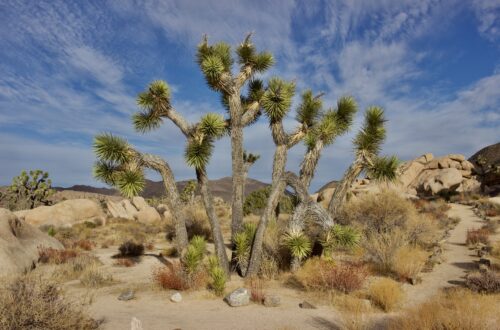
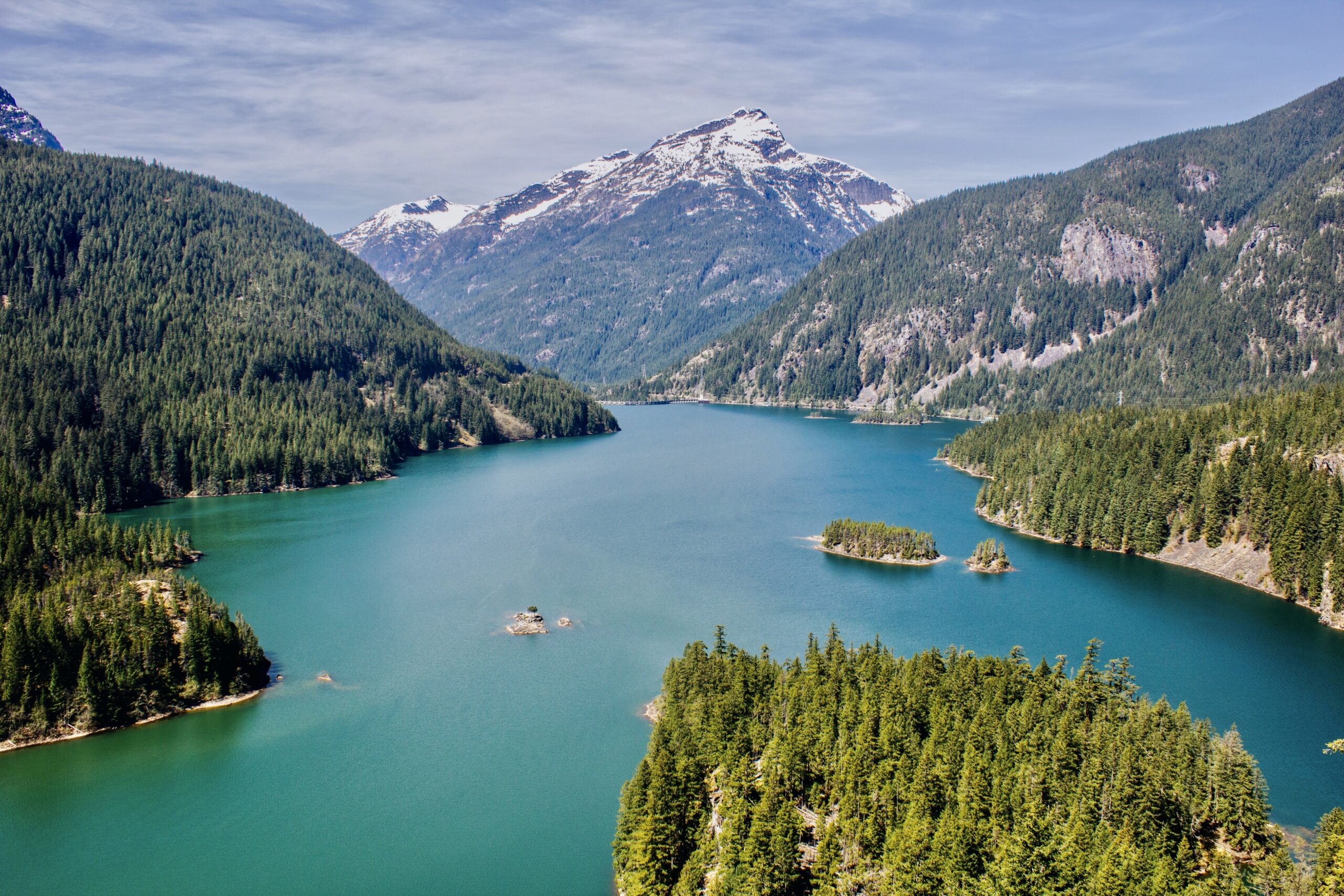
One Comment
Pingback: